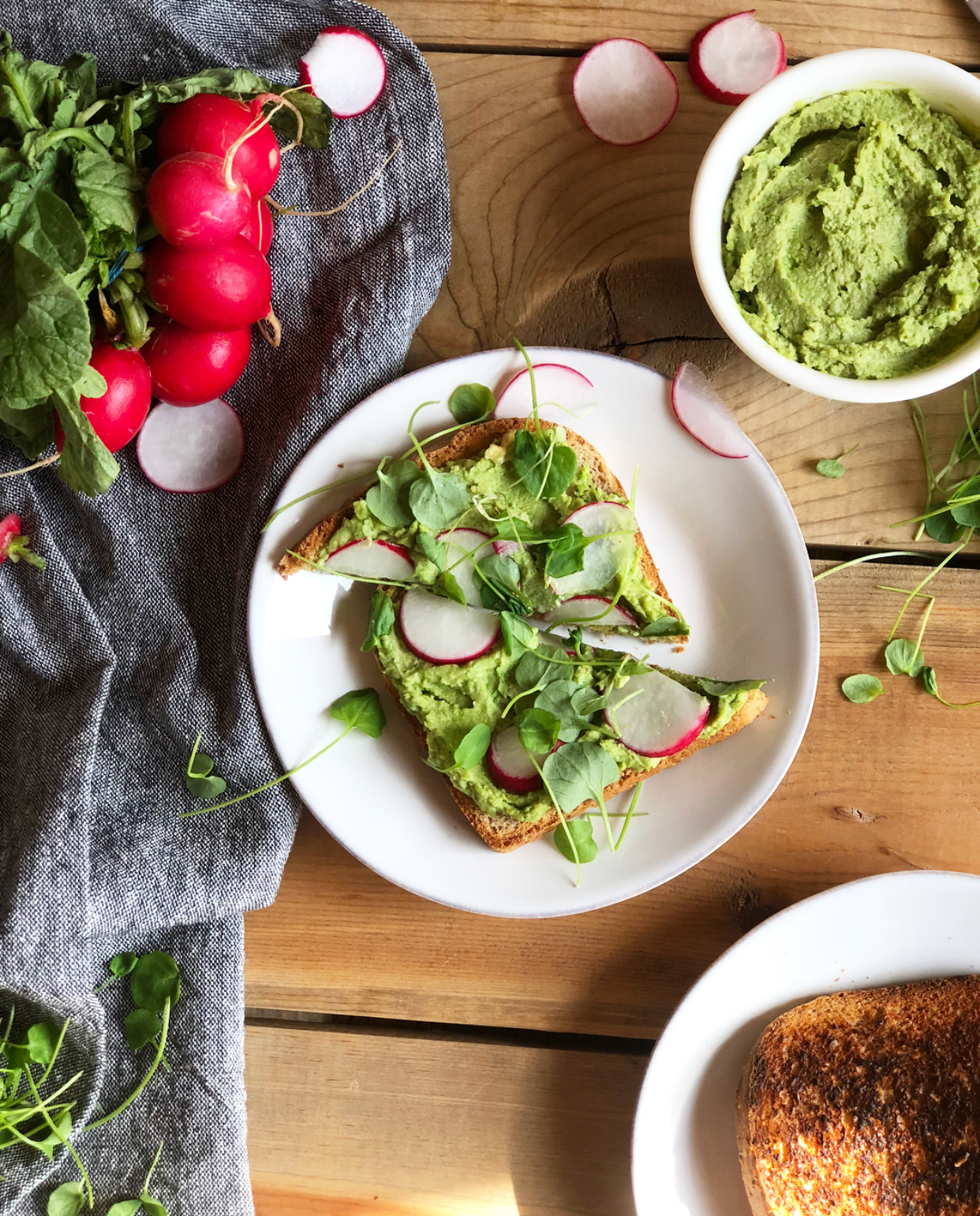Pea Pesto Toast
Part of me feels guilty for even calling this a recipe, but it's just too scrummy not to post.
I got this idea from Minimalist Baker's vegan pea pesto pasta that she first posted in 2016. Her version calls for basil and flat leaf parsley, along with fresh peas, to contribute to the flavor. After a little testing, I found that I actually like the pesto's flavor better with peas alone, rather than with the addition of herbs. I think the peas bring enough green, springy flavor to hold their own without the extra flavor punch, but if you want to throw in some herbs I won't stop you.
Before this recipe, I had never made a vegan pesto, so I was a little skeptical of how the parmesan substitute of cashews plus nutritional yeast (aka nooch - thank you, Thug Kitchen, for the fun word) would affect the classic pesto flavor. Although it's not an exact replica of parm, the cashew and nooch combo is delightfully nutty and adds its own special flair to the spread that is the perf compliment to the peas.
When I made this, peas weren't quite in season yet, so I used rehydrated freeze-dried peas in place of fresh peas. This method made a bomb pesto, and Minimalist Baker said that frozen and thawed would work as well, but definitely go for fresh garden peas if they're in season.
Let me know what you think of the recipe in the comments and don't forget to follow the sustainability tips below!
Time: 5 minutes
Makes: About 1 cup pesto
Ingredients
For the Pesto
1 cup green peas
1/4 cup walnuts
1/4 cup cashews
1 tablespoon nutritional yeast
1 large clove garlic
1/4 cup olive oil
1/4 teaspoon salt, or more to taste
For the Toast
Bread (vegan, if making recipe vegan)
Radishes
Microgreens
Other toppings of choice
Steps
Throw all pesto ingredients in a blender or food processor and blend until smooth. Serve on toasted bread with sliced radishes, microgreens and all you other toast topping favs.
Sustainability Tips
Peas: Buy your peas locally, organically and when they're in season (pst! that’s spring!). This way, they won't have to travel a quadrillion miles to get to you and they won't be contributing to pesticide contamination. If you can't find local or organic garden peas, buy frozen or freeze-dried organic peas and thaw or rehydrate them before using.
Radishes, Garlic and Microgreens: Like the peas, local and organic radishes, garlic and microgreens are your best bet. Local varieties will be easiest to find when they're in season, so be sure to make this recipe in the spring.
Walnuts: Most walnuts for sale in the U.S. are grown in California, where they guzzle more water than the state can handle. Save this pesto for a special treat so you’re not contributing too much to this extreme water use.
Cashews: Forever and always buy fair trade cashews. Most cashews sold in the U.S. are grown and processed in Africa, India or Vietnam at operations associated with nasty practices and poor working conditions (think: acid burns and forced labor).


